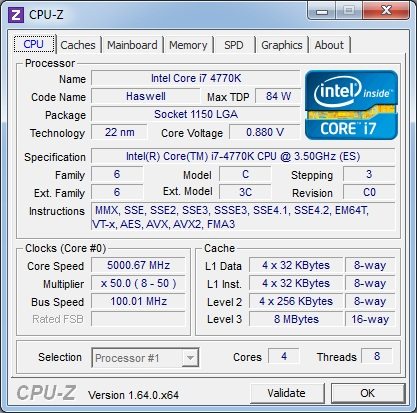MSI Z87 MPOWER (Z87) Motherboard Review
Andy Ruffell / 12 years ago
The board certainly looks impressive when it comes to its 16 phase design and this gives us high hopes when it comes to overclocking and what should be on offer. With this in mind, we booted straight in and tried the 46 multiplier giving us 4.6GHz with a voltage of 1.385V as our maximum voltage. We could then proceed to push the multiplier while knowing that voltages shouldn’t cause any concern. We pushed to 4.7GHz with no issue, and the same with 4.8GHz, with 100% stability within Windows and our whole host of benchmark utilities to test for a concrete overclock. 4.9GHz was the next step and getting ever closer to the magic 5GHz number, we weren’t holding our breath as we knew how Haswell wasn’t able to be pushed as far like the good old Sandybridge days.
We got around to pushing the multiplier to 50 and that magic 5GHz and we held our breath as it booted into Windows. Running through our benchmarks, everything was 100% stable across all tests including Super PI, Cinebench and 3DMark including its intense physics and combined tests which can really stress the CPU. Sadly 5.1GHz was out of the question, and while it booted into Windows, it was no where near stable through our gauntlet of applications, but that didn’t matter as 5GHz was still an incredible result, and at the time of writing this is the highest overclock we’ve had with our Haswell i7 4770k CPU processor, so MSI can take some kudos points for that.
You’ll have to ignore the voltage readout on the CPU-Z screenshot, but take it from us that 1.385V was used and with vdroop kicking it, the voltage lingered pretty close to 1.385V throughout idle and load.




















